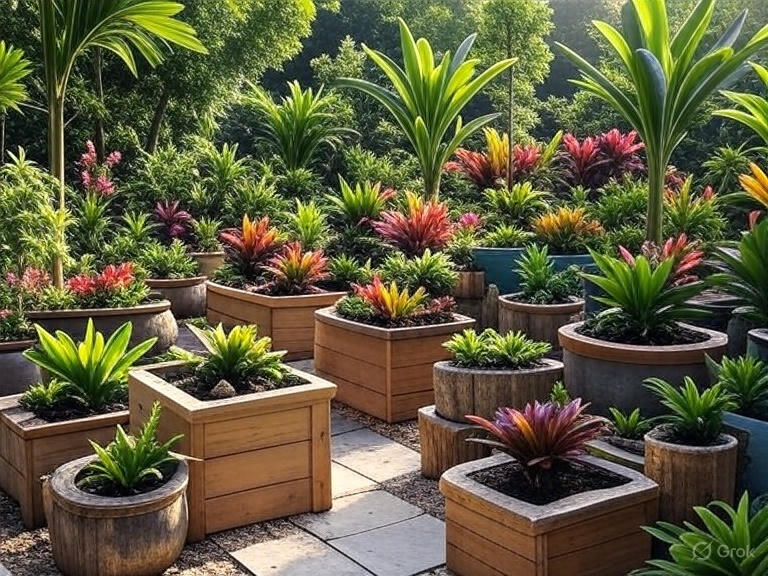
October 01, 2025 - Zed van der Vyver
Introduction to Gardening in Thailand
Gardening in Thailand is more than a hobby—it’s a practical way to enhance your home, manage the tropical climate, and even grow food. With year-round warmth, heavy rains, and rich soil, the region offers unique opportunities and challenges. This blog will explain why gardening matters in Thailand, the different types for various needs, how they are created, and what they might cost. No gardening expertise needed—just straightforward info to help you get started!
Why Gardening Is Essential in Thailand
Gardening serves multiple purposes in Thailand’s tropical environment. It beautifies homes, reduces urban heat in cities like Bangkok, and provides shade during the scorching afternoons that can exceed 35°C. It also supports local ecosystems by attracting pollinators and managing water runoff during monsoons, a concern in flood-prone areas like Ayutthaya. Additionally, growing herbs or vegetables—like lemongrass or chili—cuts food costs and connects you to Thai culture. Whether in a rural Chiang Mai village or a Pattaya suburb, gardening improves air quality, privacy, and self-sufficiency.
Types of Gardens for Different Scenarios in Thailand
Gardens vary by purpose and location, and the best type depends on your space and climate. Here’s a look at common types in Thailand and where they fit best:
Raised Bed Gardens
Use: Urban homes or flood-prone areas.
Why: Elevated soil beds prevent waterlogging during monsoons and suit small spaces. They’re ideal for vegetables or herbs.
Example Scenario: A condo balcony in Phuket.
Tropical Ornamental Gardens
Use: Residential yards or resorts.
Why: Featuring plants like orchids and frangipani, they thrive in Thailand’s humidity and add aesthetic value. They need regular watering.
Example Scenario: A villa in Krabi.
Container Gardens
Use: Apartments or shaded areas.
Why: Pots or planters allow flexibility and suit dry spots. They work well for herbs or small ornamentals.
Example Scenario: A Bangkok rooftop.
Edible Landscape Gardens
Use: Rural homes or self-sufficient plots.
Why: Combining food crops (e.g., mango, papaya) with decorative plants, they maximize yield in Thailand’s fertile soil.
Example Scenario: A farm in Chiang Rai.
Your choice depends on your space, water availability, and gardening goals. Local nurseries like Suan Luang Rama IX offer plants suited to Thailand’s conditions.
How Gardens Are Created in Thailand
Gardening in Thailand involves adapting to the tropical climate while meeting practical and aesthetic needs. Here’s a general overview of the process:
- Site Selection: Choose a spot with good drainage, considering flood risks in low areas. Sunlight and shade patterns are assessed.
- Soil Prep: Local soil—often clay-heavy—is mixed with compost or sand for drainage. Raised beds use imported topsoil or organic matter.
- Planting: Seeds or seedlings (e.g., rice, lotus) are planted, timed with the rainy season (May–October) for natural irrigation. Ornamentals are spaced for growth.
- Irrigation: Drip systems or hand-watering are set up, leveraging monsoon rains but adding backup for dry spells in the North.
- Maintenance: Weeding, pruning, and pest control (e.g., using neem oil for bugs) are regular tasks. Mulch helps retain moisture in Thailand’s heat.
Local farmers in rural areas often use traditional methods, while urban gardeners rely on modern tools and nursery-bought plants.
Cost Comparison of Gardening in Thailand
Gardening costs in Thailand vary by type, size, and materials. Here’s a breakdown (in Thai Baht per square meter, as of October 2025):
| Garden Type | Cost (THB per sqm) | Typical Use | Notes |
|---|---|---|---|
| Raised Bed | 500–1,500 | Urban gardens | Includes wood or concrete frames; soil adds cost. |
| Tropical Ornamental | 300–1,000 | Residential yards | Plant variety and labor drive price. |
| Container | 200–800 | Apartments | Pots and soil are main costs; scalable. |
| Edible Landscape | 400–1,200 | Rural plots | Seeds and maintenance add to expense. |
Example Calculation: A 10 sqm raised bed might cost 5,000–15,000 THB, while a container garden of the same size could be 2,000–8,000 THB. Initial setup includes tools (500–2,000 THB), with ongoing costs for water and plants. Prices are up 10–15% since 2020 due to supply chain issues.
Final Thoughts
Gardening in Thailand offers a way to beautify your space, grow food, and adapt to the tropical climate. Whether you’re starting a raised bed in the city or an edible landscape in the countryside, there’s a type for every need. Consider your space, water access, and budget, and visit local markets or nurseries for the best plants. Gardening might start small, but it grows into a rewarding part of your home. Got questions? Leave a comment—we’re here to help!
